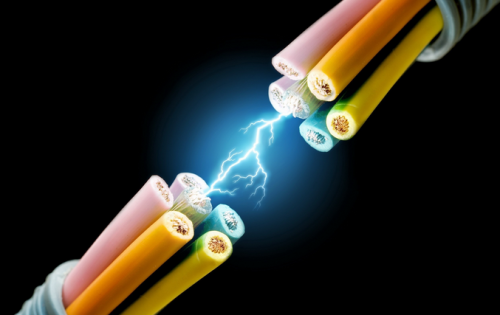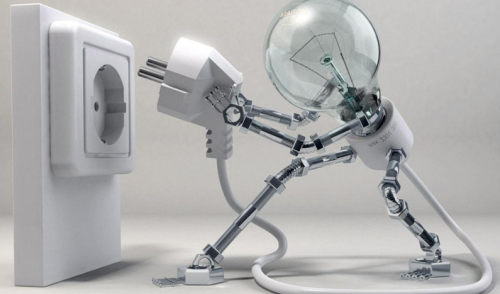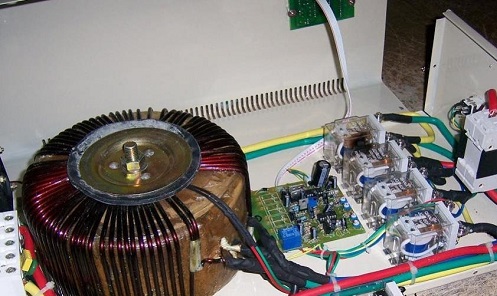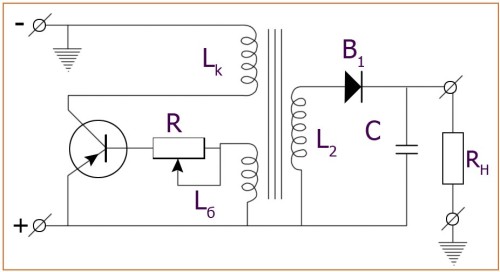The high productivity of alternating current, in contrast to the constant, is confirmed for a long time not only by theoretical method, but also practical. However, sometimes there are some difficulties when there is access to a constant current, and the variable is impossible to get. It is in such situations that the idea of \u200b\u200bcreating a voltage converter for the house arises.
Content
Electric current types, their difference
In fact, the electric current is the directional movement of electrically charged particles, provoked by the effect of the electric field. In electrolytes, they are called ions (anions and cations), in conductors and semiconductors such parties are electrons.
Among the general understanding of the essence of electricity is distinguished by a separate direction, which is called the shift current. Its move is determined in the process of charge capacity, in other words, in the transformation of the difference in potentials between the plates. The current passes through the condenser, but in this place there is no movement of particles.
In nature, there are 2 types of current:
- during the operation of the DC, there is a oscillation of its magnitude, but at the same time it does not modify its mark for a long time;
- a variable current can be changed from time to time over its mark. In this type of current, two semidewrites should be solved - negative and positive. All that above zero-level belongs to a positive half period, and below - to negative.
What is a voltage converter, its purpose, function
The electrical energy converter is called an electrical device, which is designed to convert the values \u200b\u200bof the electric current (frequency, voltage, phase number, signal types). Semiconductor devices are widely used for the converter design, as they guarantee a high efficiency.
Voltage converters appeared almost simultaneously with electrical current generators, since it immediately became clear that the voltage parameters should be used for a specific type of device.
Using a transformer, an AC is converted, so there are boost and lower transducers. This process is performed due to the intermediate conversion of the constant voltage into the variable.
Types of voltage converter
Voltage converters are divided into two main species - these are rectifiers and inverters. Accordingly, the first alternating current is converted into a permanent, and the second is a permanent current into variable.
In everyday life, converters are used almost everywhere, ranging from chokes, igniting DRL, shoot, dNAT and similar lamps of street or greenhouse lighting.
Also, reverse action devices are used to have the ability to use household appliances that work from the AC network in the absence of a constant source (for example, a car inverter). Below you can learn how to make a voltage converter.
Characteristics of the types of voltage converter:
- The inverter is a device for changing direct current to a variable, followed by an increase in or without voltage. As a rule, the inverter is a periodic current distributor, which in appearance is close to the sinusoid. In this case, you can receive a current with different parameters, but it is only in theory. Nevertheless, the type of electricity at the output is absolutely independent of what is at the entrance. With this converter, you can get a current of different voltage and different frequency, as it automatically sets the level from zero to maximum.
The power of the voltage converter is measured in watts or kilowatts. For it, the source power is determined when it works in normal mode, and the maximum, which is 2 times more, in start-up. It is also very important that this device has a protective function from short circuit, overload, overvoltage and overheating. As a supplement, the inverter must have a built-in screen, sockets and fixtures to recharge batteries from the network. In addition, a similar transformer that performs the role of the converter, creates a complete isolation between the incoming and outgoing chains. This contributes to an increase in electrical security, which means that reduces the presence of problems during system planning.
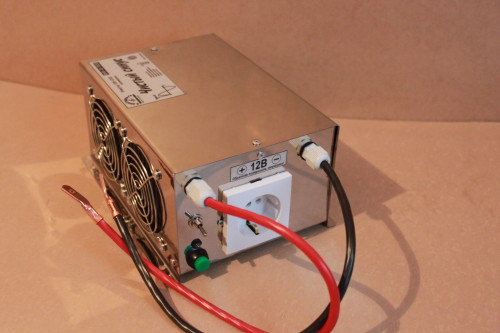
- Rectifier is a semiconductor device for changing the energy of an alternating flow of electricity into a permanent. The need to use the rectifier gets up when the DC consumer needs temporary power from an alternating current resource, for example, in the household network. Then it is put as a conductor from alternating to constant. Most often, this type of converter is used in the chargers for laptops and phones, in power blocks for a stationary computer, on substations for electrical transport, in an uninterrupted power supply device, etc. The rectifier, in different variants of the device, separates or turns one of the alternating current waves, creating the stream of the same type. The stress rectifier design schemes can be divided into single-phase, three-phase.
Voltage converters do it yourself
If there are proper schemes at home, you can collect any device, including a rectifier and an inverter. In this case, you need to competently apply all the knowledge gained and make the voltage converter with your own hands.
Creating a simple voltage converter with your own hands
For an increase in voltage converter, you will need several components available at the price.
Recommendations for creating an inverter:
- Use the usual multivibrator as a distributor. Unlike other modern high-precision microcircuit-based distributors, the multivibrator is several steps below, i.e. weaker. However, it is quite suitable for the use of the inverter among the wide masses. The functioning of the multivibrator is stable, therefore, the problems of input voltage are quite rare, as well as hard weather conditions.
- Purchase the already collected transformer from the UPS, the volume of the core of which makes it possible to reset about 300 watts of the input power.
- This transformer consists of two source windings, each to 7 V, as well as the network winding at 220 V. The primary processing wire should be no more than 2.5 mm. The voltage converter scheme is presented below.
The only disadvantage of this scheme is the lack of protection at the inlet and outlet of the electric current, so when the short circuit and reboot occurs, the field keys may begin to overheat, and it will last until they fail.
However, a lot of advantages in it:
- unearned repair;
- minimum financial costs;
- small fee size;
- functioning even with bad weather;
- widespread elements used;
- 50 Hz at the output.
Creating a simple stress rectifier with your own hands
The scheme is absolutely any lowering voltage converter (rectifier) \u200b\u200bconsists of 3 main components:
- rectifier element that has only one limited conductivity. It serves to change the voltage from the variable to the pulse;
- the power transformer is an instrument for increasing and lowering the voltage of the network to which it is connected, and the electrical isolation of the network from the equipment;
- a device for filtering pulse voltage.
Recommendations for creating a rectifier:
- As a rule, the basis for all such devices is a transformer. It is portable and stationary (a huge building for high voltage stabilization, which is served from the power station). The basis of any transformer is two coils to create an inductive electromagnetic connection. If you explain this process with simple words, the current is first given by 1 of 2 coils, charging it, after that the desired electromagnetic field occurs, transmitting a charge by 2 coil, where electricity goes on.
- To adjust the voltage, use a device called a row.
- It is unorded to tune it with your own hands, therefore it is better to put a small chip to it that can stabilize the voltage. It will be fixed on the direction of current flow after it comes out of the transformer.
- Purchase 12-16 condensers of equal capacity to remove current from the transformer. They collect current in one place and give it more uniform.
- Attach the condensers to the row. To obtain a softer alignment, set several retakes in parallels.
- After combining into one stream at the stage of capacitors, divide the circuit into several separate branches that are connected to the row. To do this, use the formula R / number of risostates, according to which each row has resistance to a certain amount of OM.
- After that, the chain is combined to a one-stream and is discharged to a diode that is connected to a conventional home outlet.
- All specified actions belong to a wire with a phase, you just need to connect it to the outlet.
This method of assembling an ordinary rectifier is quite outdated, therefore, to increase efficiency, there is a device with a protective shutdown function (UZO). In it, the current also comes from the transformer to the RCD, and zero is connected to it accordingly. In the event that the voltage jump occurs, the RCO automatically disconnects the chain, and the household appliances will not receive any damage. After fixing network problems, the transformer will continue to work further as usual.
If you want to assemble a downgrade voltage converter, then you will need a regular transformer, the second coil of which is wrapped with a thicker copper wire. Otherwise, the transformer fails immediately.
In cases of too high voltage, it is necessary to use a downstream transformer. You can collect it by analogy, by the exception that the winding on the second coil should be made of a thicker wire, otherwise the entire device burns. There are also universal decrease in-boiling instruments.
Homemade voltage converters can even make a schoolboy. These are simple devices inexpensive, but high-quality assembly. However, do not forget about safety measures in working with electricity.


